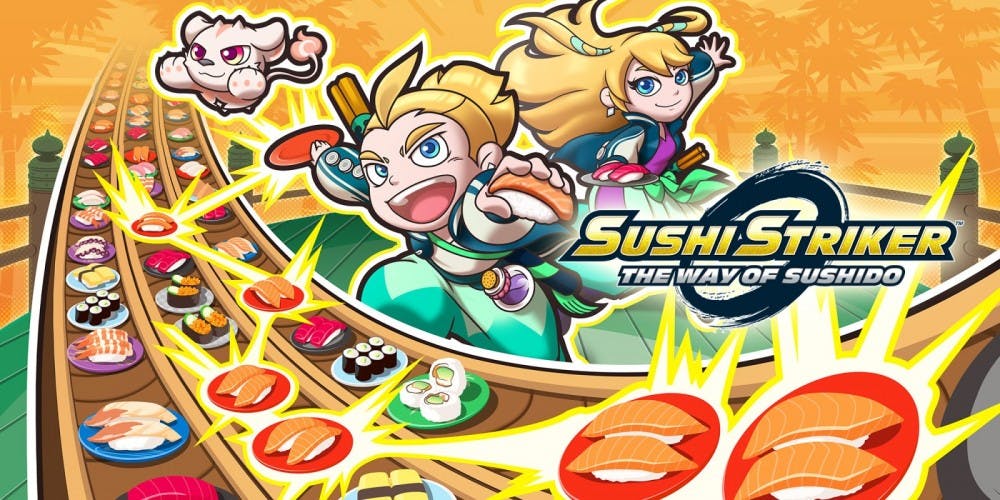Disclaimer: This review is of the Nintendo Switch version of the game and was primarily played in docked mode.
The Nintendo Switch has proved itself to be a very versatile console to match a versatile company like Nintendo. A console that houses both DOOM and Pokemon Quest within the same shop makes for an interesting line-up. As Nintendo slowly gets their main franchises to the Switch, with Pokemon, Metroid, Yoshi, and Smash Bros. coming soon, it’s the constant drip-feed of titles that keep the console alive during dry spells. One of those games is Sushi Striker: The Way of the Sushido. Nintendo, in conjunction with indieszero (developers of the Theatrhythm Final Fantasy series), created an incredibly charming, though somewhat imbalanced game.
Fight for food freedom
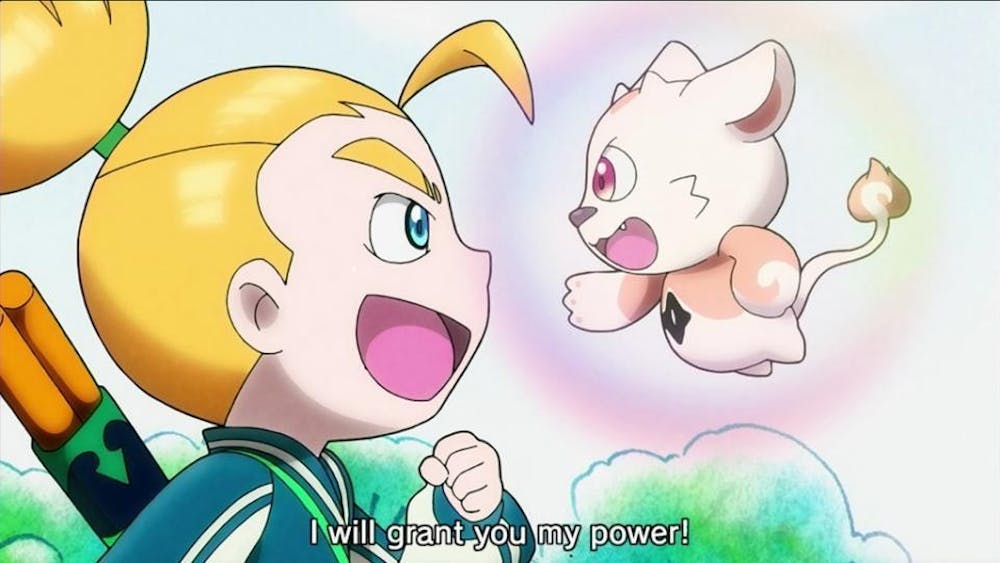
Image from Newsweek
The world is in peril, as an evil empire (because all empires are evil) has taken all the sushi from the general population. Tensions are high as the Sushi Liberation Front are slowly trying to build their army within the Empire’s territory, and another all-out sushi war is on the horizon. Here we meet Musashi, a young boy/girl (since I chose female Musashi, I’ll be using the feminine pronoun) who wants to bring sushi to the world after meeting a stranger named Franklin (very Japanese name, I know). To do this, Musashi befriends a legendary sushi sprite name Jinrai and becomes a sushi striker. With her new power, Musashi joins the Sushi Liberation Front to drive back the Empire and bring sushi to the world.
The story is very simple, and any “twists” the game offers can be seen coming a mile away. The game, however, is stuffed with interesting characters and charming–though sometimes cheesy– dialogue. The characters may not be more than one-note personalities, but those personalities work well with the style and story the game tells. Plus, the story is incredibly ridiculous from ground up, so the cheesiness of it all comes together well. Cheese does generally improve everything, though maybe not sushi. A couple favorite characters of mine are the eccentric TV-producer Rio and the soft-spoken Sushi Assassin Celia. In a game all about charm, the writing does its job sufficiently well. It’s not an incredibly gripping tale with twists and turns, but it works.
A Saturday morning cartoon anywhere, anytime
Sushi Striker’s presentation is incredibly nostalgic to anyone who spent their childhoods growing up with shows on 4Kids. The opening of the game includes a fairly lengthy, fully 2D animated cutscene, which really just gives the same simple joy as watching something like Dinosaur King or Spider Riders (though, maybe not quite as terrible). There are a number of these cutscenes within the game, and they are all a joy to watch. The animation and character design is all really stellar, with plenty of unique faces to keep the game interesting. Sushi Assassin Celia and the female Musashi are both incredibly adorable. The number of 2D stills for emotions the characters have is also more than expected for a game like this, with Musashi in particular having a tons of different, creative stills for expressing her emotions.
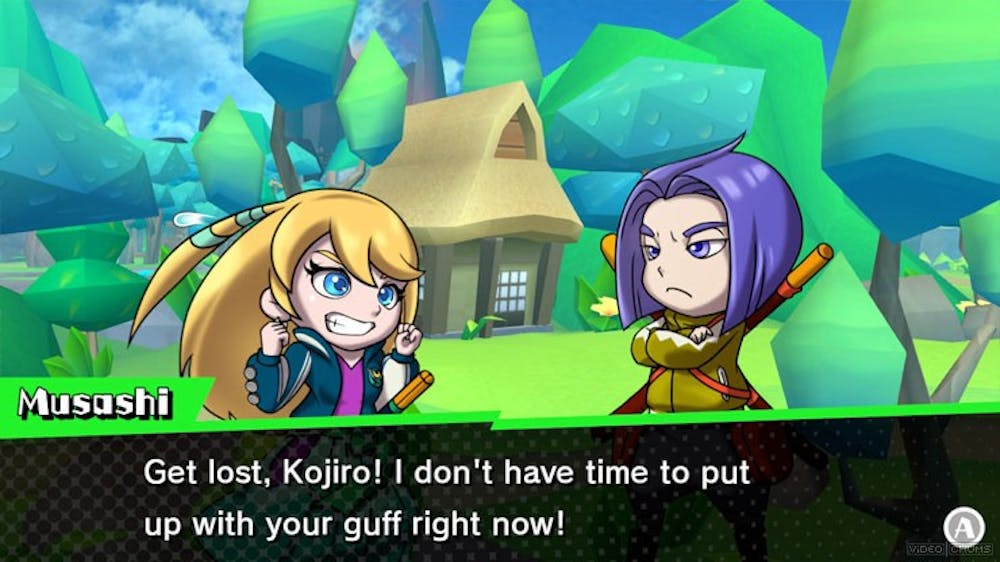
Image from VideoChums
The music is also pretty fantastic, though nothing really too special. The nature of the music fits the chaotic sushi combat, and even in fights that took multiple attempts, the music never became grating. The lack of music tracks is a bit disappointing, but it isn’t a terrible thing. The music choices and sound effect stings during the 2D cutscenes add to the Saturday morning cartoon charm. Speaking of which, the sound effects are all very fitting and work for the game, all very exaggerated and comic. The voice acting is pretty good overall, with some line reads being better (or funnier) than others. The way Musashi’s voice actress (Christina Vee) says “GHoOoOST SUSHI” puts a smile on my face, and that’s all that really matters.
The lacking part of the presentation comes in the backgrounds. Many are 3D backdrops, rather than 2D renders or any other kind of 2D art. It wouldn’t be so bad if the 3D art was good, and it probably doesn’t look bad on the 3DS version of the game, but while docked on the Switch it looks incredibly low quality. The game would look a lot better overall if it used entirely 2D art with a pop-up book style. As it stands, the 3D art doesn’t get in the way, but it still sticks out.
Addictive and fast-paced sushi combat
The core gameplay of Sushi Striker: Way of the Sushido is somewhere between Puzzles and Dragons and Puzzle Fighter with an art style that is reminiscent of Puyo Puyo Tetris. It’s puzzle-action glory at its finest. The player must connect adjacent plates of the same color together, creating stacks of plates. This sounds simple, but these plates are all moving on three conveyor belts, sometimes with the one in the middle moving opposite the others, and other times with all three moving in the same direction. To damage the opponent, these stacks of plates can be thrown, dealing damage based on how many plates are stacked. By eating the sushi on these plates, Musashi powers up her sushi sprites’ skills. These skills can be used to influence the battle, some influencing conveyor belt speeds, how much damage is dealt or other random factors in battle. It seems a little confusing at first, and there is a bit of a learning curve, but it is very rewarding once it all clicks.
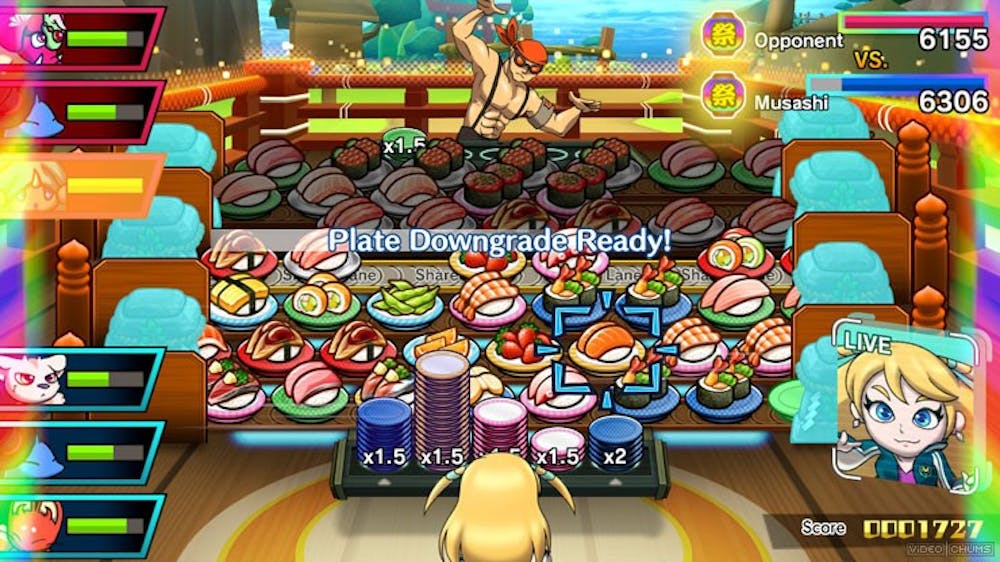
Image from VideoChums
The flow of gameplay is fantastic. Every factor in preparation plays a part in the battle. Understanding the enemy’s skills, Musashi’s skills, the favorite sushi bonuses, how to efficiently deal the most damage, and perfectly timing when to attack is all very engaging and makes for a combat system with a lot of depth. The first time 30 or more plates get chained together is incredibly satisfying, with the sound effects playing a big part in that. When the combat clicks and the brain awakens, it is so satisfying to smash the opponents into the dust.
Sometimes though, the requirements to chain plates together can become murky. There are times when plates would connect without any real reason as to why they do, and sometimes plates that look like they should connect don’t work as expected. These problems are especially apparent during stages where all conveyor belts move in the same direction.
The main story mode provides an underwhelming challenge, with most stages being very easy while played normally. Fortunately, the game gives the player what I referred to as the “Hard Mode Belt,” which reduces the player’s health by half, but rewards additional points and experience for victorious battles. For younger kids, the challenge is probably too daunting, but for adults with some skill in puzzle games, the story mode should definitely be done entirely with the Hard Mode Belt.
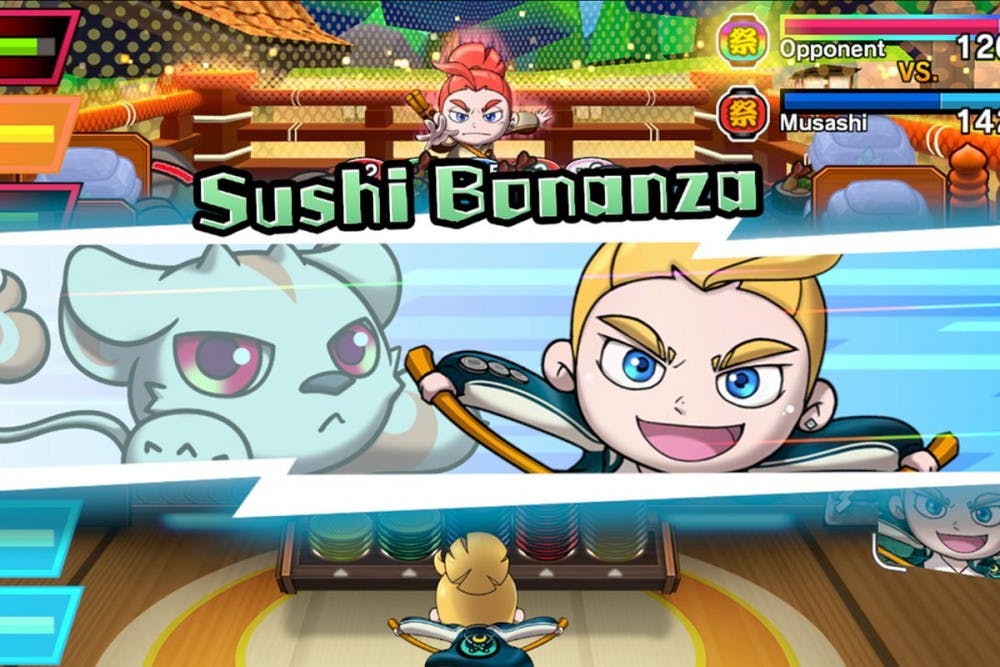
Image from Polygon
The special stages, unlocked after liberating a section of the island from the Empire, are genuinely hard though. The AI in these stages is much more vicious and intelligent, some using cheesy strategies like continuously healing. Completing these stages with the Hard Mode Belt are quite the challenge but are incredibly rewarding when victory is achieved. Each stage also has additional challenges which, when completed, award stars similar to mobile puzzle games. These will usually take another attempt or two to get but generally don’t take too much additional time.
There are a few other additional modes added. There’s an online mode to battle other people across the world in sushi combat, along with local multiplayer. The game also includes a more puzzley equivalent to the plate-stacking gameplay in the Puzzle Hut. The game randomly generates three rows of plates, which must all be collected in under 10 seconds and five moves. It’s a legitimately hard challenge, and I lovingly referred to it as “Screaming Anime Girl Simulator,” since I rarely succeeded in these challenges, and Musashi screamed everytime she lost. If the more puzzle-style gameplay sounds interesting, it isn’t that deep, but it’s worth a try. If the screaming anime girl sounds interesting, please seek help.
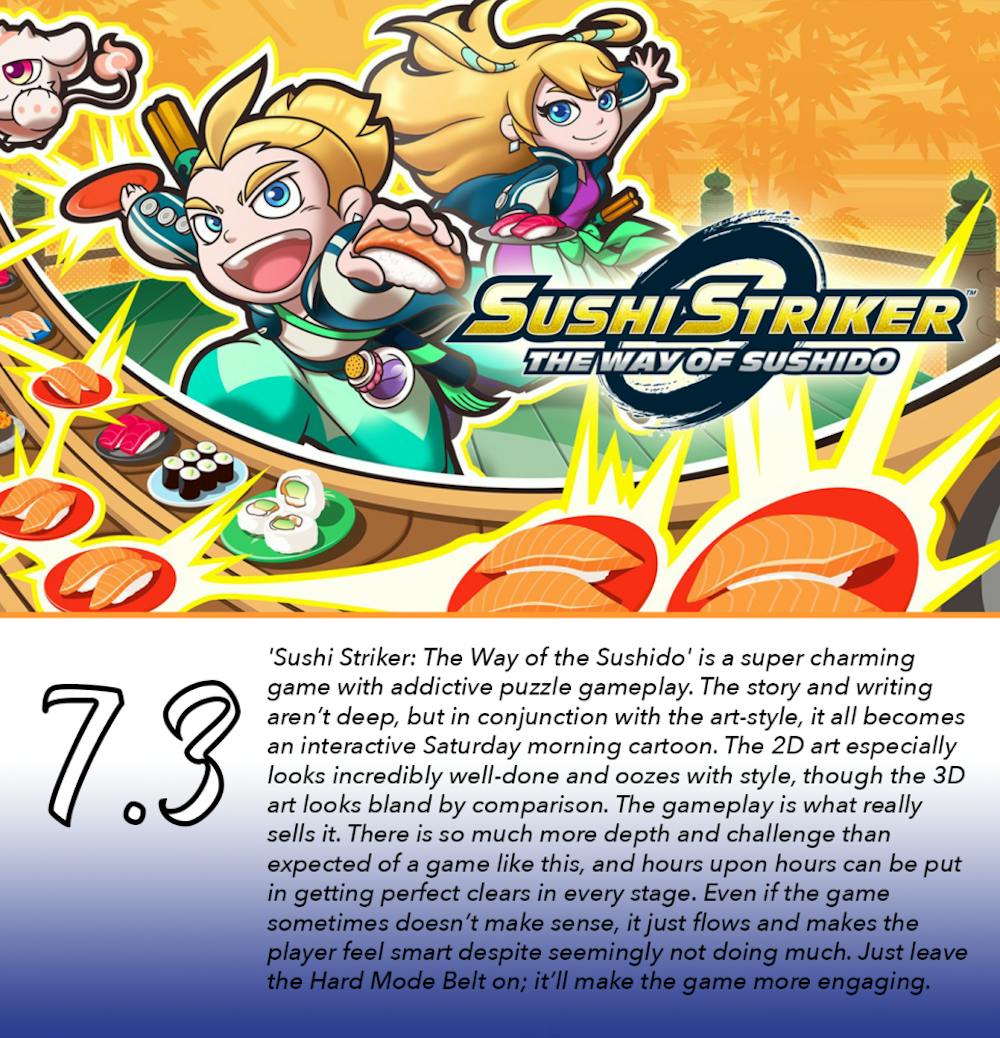
Featured image from Miketendo64
For more entertainment related content, visit us at Bytebsu!















